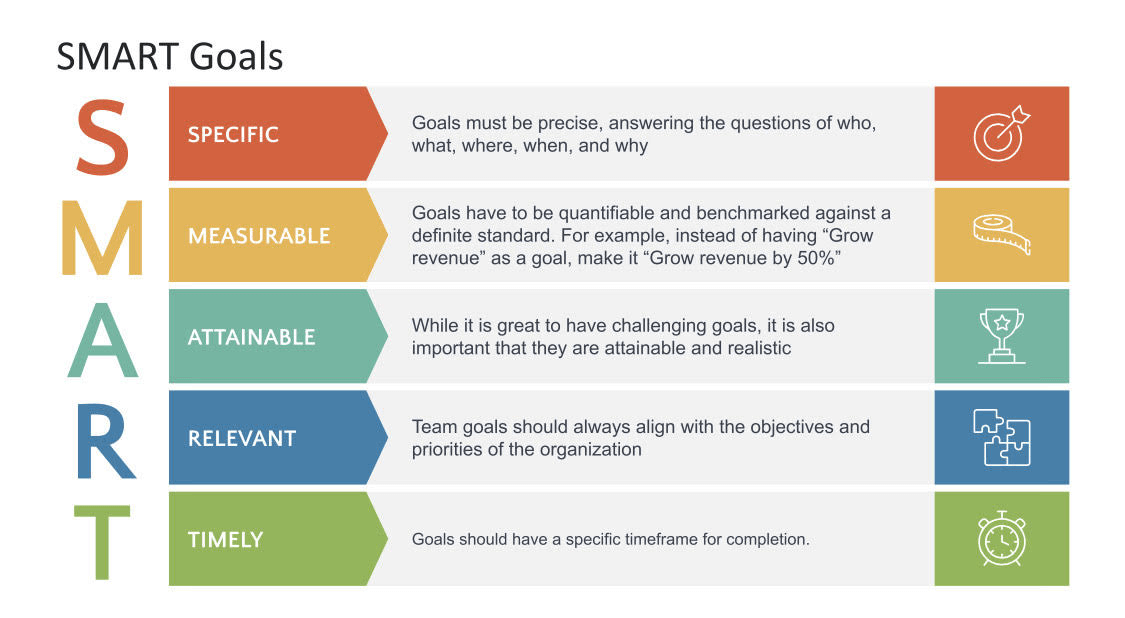Read more: Have a Compensation Review with Employees

How to Lead a High-Performing Sales Team: 12 Expert Tips
Unlock the power of AI — Notta's meeting assistant records, transcribes and summarizes meeting minutes with one click.
Whether you are a seasoned salesperson transitioning to a management role or an experienced manager looking to level up your team’s performance, managing a sales team has never been easy. Especially when there is a high correlation between the sale lead and reps’ performance.
A study by the Rain Group also revealed that 75% of salespeople meet their yearly targets when a high-performing sales manager is leading them while the low-performing sales managers lead only 47% of their reps to success.
So take a minute and ask yourself - do you want to be a revenue generator or a revenue sink?
I bet your answer is the former, that’s why we’ve put together 12 expert sales team management tips that aspiring sales leaders can refer to.
The roles and responsibilities of a sales team lead
A sales manager is responsible for managing a team of salespeople who are tasked with generating revenue for the organization. Therefore, their roles revolve around interactions with and duties to the following stakeholders:
Sales reps
Company's leadership
Other departments within the organization
Below is a breakdown of the key responsibilities.
1. Leadership and team management
As a sales team leader, you are the team’s visioneer and overseer. Your team depends on you to develop and communicate a common goal and guide them to achieve it.
Your responsibilities to the team in this capacity, therefore, include:
Recruiting and hiring top talent.
Setting clear goals and motivating the team towards achieving sales targets.
Resolving conflicts and challenges within the team to promote a harmonious and productive work culture.
2. Sales strategy development and implementation
The sales strategy is often formulated in collaboration with the company’s leadership and the sales team. However, the bulk of the responsibility rests on you.
As a sales team lead, you should conduct market research and analysis to identify market trends, customer needs, and competitive landscape. Then develop a feasible selling strategy and translate that into actionable plans.
3. Performance evaluation and coaching

Reps must remain accountable and strive for continuous improvement to deliver consistently great results. And as the team lead, you can help them by:
Regularly assessing individual and team performance against sales goals.
Providing constructive feedback and coaching to enhance their performance.
Identifying underperforming team members and implementing performance improvement plans to maximize their potential.
4. Sales forecasting and reporting
The average sales team lead spends 26% on managing information. This often involves monitoring sales pipelines, analyzing sales data, and using insights to make informed predictions about future sales performance.
In addition to forecasting, regular sales reporting is essential to tracking progress toward sales goals. The sales manager will prepare and present sales reports to senior management, highlighting key metrics such as revenue, conversion rates, and customer acquisition costs, among others.
Notta offers the most integrated AI meeting notes, summaries, and action items so nothing gets missed.
12 sales team management tips for success
We are now at the core of the guide. Here, we will be discussing 12 tested and tried tips for leading high-performing sales teams.
If you are currently coasting in your role, these may be a little difficult for you to execute. However, if you are committed to improving, these tips will greatly enhance your management approach and sales results.
1. Set clear goals and expectations
Goal-setting is a critical aspect of effective sales leadership as your team needs to know where they are working towards to be productive.
According to psychologists, goal setting can increase productivity between 11-25% and 61% of salespeople also agree clear goals and expectations are the top factors impacting productivity.
So, what should you do?
Firstly, set SMART goals. Setting goals is a little tricky. You need to ensure the goals are ambitious enough to challenge the team to apply themselves, but also realistic to not cause a strain or leave them dispirited. SMART goals guarantee this balance.
SMART goals are specific, measurable, attainable, relevant, and time-bound. So, for example, instead of saying, "Increase sales," set a goal like, "Achieve a 10% increase in sales revenue by the end of the quarter."

Secondly, you should align goals with the overall sales strategy. Ensure that individual and team goals align with the broader sales strategy and organizational objectives. This will help each member understand their unique role in the team’s overall success.
You should also involve the team in goal-setting. By seeking their input and incorporating their perspectives, you can create a sense of shared responsibility.
2. Determine a sales team structure
The most effective way to introduce order into any team is to create a definite team structure. Setting up an effective sales team structure is also crucial for facilitating collaboration within the team.
There are three common sales team structures you can choose from:
The Island: This is the most common sales team structure. The leader or manager oversees reps as direct reports. Each salesperson is responsible for prospecting, nurturing and closing deals, and managing their accounts.
The Assembly Line: The Assembly Line structure involves breaking down the sales process into specific stages and assigning different team members to handle each stage.
The Pod: The Pod structure is a hybrid approach that combines elements of both the Island and Assembly Line structures. In this structure, a small group of sales representatives or "pods" are formed, typically consisting of sales representatives, marketing specialists, SDRs, CSMs, and a pod manager, to work together towards a common goal.
After deciding on a structure, you can proceed to establish a reporting hierarchy that promotes clear lines of communication and accountability.
3. Hire and retain the right people
“I’m convinced that nothing we do is more important than hiring and developing people. At the end of the day you bet on people, not on strategies.” – Lawrence Bossidy
For any manager, the cornerstone to success is hiring and retaining the right people.
When hiring, look for candidates who have a track record of success in sales and a passion in selling. Additionally, consider their communication and relationship-building skills, as well as their ability to work collaboratively with others.
Hiring high-performing sales reps is, however, not enough. You need to retain them and the ideal attrition rate should be no more than 10%.
The common strategies to retain top performers include a well-structured onboarding program, ongoing training and development opportunities to help them grow in their roles, a competitive compensation package, and a healthy working environment. Also regularly have one-on-one check-ins with your team members to connect with them, understand their needs and address their challenges.
4. Offer competitive and fair compensation
Have you ever wondered what the best way to motivate your sales team is? Well, as expected, the majority of salespeople consider “competitive salary and benefits” their top motivator.
However, employees do not only want their compensation to be competitive - they also want it to be fair and consider “fair pay” the biggest factor in determining whether to continue working in a company. 64% of people who believe they are paid below market will apply to other jobs.
Then how to determine the suitable compensation package?
Conduct market research in conjunction with the HR team to understand the prevailing salary ranges, commission structures, and benefits in your industry and geographic location.
Consider defining a base salary and variable pay to incentivize high performers and make the information transparent to all sales representatives. Also, introduce non-monetary incentives and benefits, including adequate time off, flexible work, and remote work set-up.
Your compensation package should evolve in line with changing business needs and industry standards. So conduct periodic reviews and make changes to the package when necessary.
5. Build a healthy team culture

94% of entrepreneurs and 88% of employees believe that a healthy culture at work is vital for success - and this is not at all surprising. Your team culture dictates your work environment, how team members relate, and the prevailing work ethic.
Create an environment of psychological safety where open and honest communication is encouraged. Team members should be able to share their thoughts freely (but respectfully) without fear of being judged, punished, or ridiculed. You can take this a step further by setting up accessible channels for them to share their ideas, provide feedback, and address concerns.
Encourage work-life balance. Recognize the importance of rest and time off to avoid burnout and maintain a healthy work environment. You should also lead by example. If your team knows you as a chronic workaholic who takes no days off, they are likely to normalize and mimic this behavior.
A note of warning here: no matter how well-intentioned the culture you envision is, you must ensure that they align with the overall values of the organization. Your sales team culture must not contradict the company’s values and mission.
6. Introduce agile work
You are probably familiar with how agile methodology is applied by tech teams to guarantee efficient project management and flexibility in their operations. The same principles and practices are now applied by sales teams to help them be both responsive to customers’ requests and adaptable enough to evolve in line with their feedback and preferences.
To introduce agile work in sales, start by daily standups, where team members answer these three questions:
What did you accomplish yesterday?
What will you do today?
What is blocking your progress?
This allows you to address team challenges, customer feedback, and insights from sales data daily, instead of putting them off until later as a single meeting.
When approaching projects in agile, it's important to adopt an incremental perspective, i.e. focus on smaller milestones rather than the entire project as a whole. By prioritizing smaller goals instead of fixating on a single end result, you create the opportunity to treat each step as an achievable unit. This approach also allows you to iterate each increment as needed, ensuring continuous improvement throughout the project cycle.
Additionally, provide training and support for team members to ensure they understand the agile methodology and how to apply it in their day-to-day work.
7. Provide continuous training and development opportunities
You probably already understand why providing continuous training and development opportunities for your sales team is crucial for keeping them equipped with the necessary skills to excel in their roles.
According to a study by Ohio University’s Dr. Adam Rapp, companies that allocate higher percentages of their sales training budget toward management training have better sales performance.
For your team, you can develop a training program focused on enhancing their sales techniques and skills, including delivering sales demos, prospecting, lead generation, objection handling, negotiation, closing deals, and relationship building. During the process, the sales lead should also identify individual skill gaps and provide specific training. After the training program, it’s recommended to have regular sales meetings to gather sales reps’ feedback and track improvements in performance metrics to assess the application of the learned skills in real-world sales scenarios.
We also recommend sponsoring your team’s participation in networking events, mentorship programs, and conferences to expand their perspectives and support their career advancement.
8. Motivate and inspire the team
Working in sales is not for the faint-hearted. Your team members probably go through several cycles of rejection and unsuccessful pitches and interface with difficult customers. And all these account for a loss of motivation in the workplace.
This is where a sales manager steps in to manage sales reps and get them motivated. Here are some things you can do:
Frequently communicate your team’s vision to members to help connect their everyday mundane tasks to the bigger picture. Understanding how their work contributes to the team's or organization’s success can help them stay motivated.
Implement incentive programs that provide tangible rewards for achieving sales targets or exceptional performance.
Giving team members more autonomy. Provide opportunities for team members to take ownership of their work, make independent decisions, and take calculated risks.
Celebrate achievements and recognize contributions. 69% of employees say they would work harder if they received more recognition. Therefore, you should always recognize and reward outstanding performance.
9. Develop a sales methodology
“I don’t know of a single successful sales organization where sales reps are allowed to sell any way they want. Every good company has some kind of common, consistent sales process to grow sales.” - Kevin F. Davis, author of The Sales Manager’s Guide to Greatness
A sales methodology is a set of guidelines that a sales team follows in executing their roles to guarantee consistency in performance and maintain a uniform standard in their overall sales approach.
You need your team to be able to effectively engage with prospects, deliver value, and drive conversions. Leaving your team to “wing it” and operate on their whims will not get you the desired results. Therefore, a sales manager should develop an effective sales approach and instill it in your reps.
To develop a sales methodology, start by analyzing your target customers and identifying the key stages in your sales process. Next, determine the specific actions and behaviors that are most effective at each stage and create a step-by-step framework for sales team members to follow.
10. Analyze and utilize sales metrics
Analyzing sales metrics yields valuable insights into your business health and areas for improvement - thus allowing you to optimize sales strategies and achieve your objectives. So, clearly, it is worthwhile.
Sales metrics are key performance indicators (KPIs) that measure various aspects of the sales process, such as revenue, conversion rates, customer acquisition costs, and average deal size. Nevertheless, you do not need to analyze all of them. Instead, you should focus on identifying the metrics that best provide a comprehensive view of your sales performance.
Determine how often each metric will be measured. You do not need a uniform cadence for measuring all the metrics. For instance, you can review pipeline growth monthly while you measure your net revenue retention quarterly.
Collect accurate and reliable data relating to your preferred sales metrics. You can source them from your CRM system, customer ratings/feedback, or other data sources that guarantee data consistency and integrity.
Aggregate the data. You can use a sales analytics software or a CRM with reporting features.
Analyze sales data to identify trends and patterns in your sales process and results. Get insight into your team’s performance and compare the results over a period to spot patterns.
Utilize the insights in your sales strategy and plan for the next cycle to improve your results. Identify areas that require improvement and figure out what the problem is and what changes you need to make to get the desired result.
11. Establish individual and team performance metrics
These metrics serve as a benchmark for members’ performance and can be used to identify their strengths, weaknesses, and challenges. This is because performance metrics function as a standard that your teams’ output can be measured against and a guide on what they should prioritize or work toward.
To be effective, the individual and team performance metrics must align with your overall sales objectives and business goals. They should favor:
individual performance outcomes that enhance organizational success, such as win rates, quota attainment, and pipeline coverage. and
actions and behavior necessary for sales success, including the number of prospecting calls made, meetings scheduled, proposals sent, or follow-ups conducted.
It is also essential to determine the timeframes for evaluating performance and reporting results. Decide if the metrics will be reviewed weekly, monthly, quarterly, or annually. Monthly seems like a decent cadence because it is neither too frequent or infrequent. You might, however, consider increasing or decreasing the cadence depending on the metric.
12. Embrace technology to streamline processes
Technology is the ultimate team productivity hack and you cannot manage a high-performing sales team in 2023 without the right sales tools. The reason is simple - the sales process involves a lot of repetitive tasks, communication, and data management, and having to handle all these manually is time-consuming and inefficient.
Instead, by embracing technology, such as CRM software, meeting notes tools, and sales forecasting apps, you can empower your sales team to streamline processes and focus their energy on high-value activities.
For example, instead of frantically taking notes during sales calls, team members can use Notta meeting assistant, which automatically generates meeting notes and post-meeting summaries - allowing them to focus on the conversation and engage the customer better.

Furthermore, Notta seamlessly integrates with CRM software like Salesforce. This allows you to automatically sync your meeting participants’ list, notes, and recording links.
To ensure that you select the right technology, start by assessing your existing sales processes to identify areas that can benefit from technology and automation, such as repetitive and time-consuming tasks, such as lead nurturing, email campaigns, contact management, or reporting.
Notta AI meeting assistant records, transcribes, and summarizes meetings so everyone can stay engaged without missing important details.
6 common mistakes new sales managers should avoid
Making mistakes as a new manager is almost inevitable. You might fumble on a few initial tasks or make a few amateur blunders. And these are okay. We all make mistakes. You can, however. learn from the mistakes of other managers and avoid common errors that can significantly negatively impact you and your team, such as:
Neglecting communication. Failing to establish open lines of communication, provide timely feedback, or address concerns can lead to misunderstandings, decreased morale, and reduced productivity.
Micromanaging: Your responsibility is to give directions and guidance, not to strip your team of their autonomy. Micromanaging gives your team the impression that you do not trust their judgment and abilities and this could stifle their creativity and make them feel psychologically unsafe.
Inadequate performance management. At the other end of the extreme of micromanagement is the failure to establish a structured performance management process. You need to also avoid this. Instead, include regular evaluations, constructive feedback, and development plans in your performance management approach.
Lack of goal alignment. Failing to align individual and team goals with the organization's overall sales strategy will put your team at odds with the organization. You have to ensure that you are working in harmony with the broader organization’s goals, not against them.
Overlooking team dynamics. Neglecting team dynamics or failing to address conflicts can disrupt harmony and hinder productivity.
Lack of adaptability. It’s easy to become accustomed to a single way of work and decide to play it safe. But you won’t take the team far that way in a constantly evolving sales landscape. You should, rather, ensure that your approach and team are adaptable to changing trends.
Conclusion
“Change is never easy, but always possible.” - Barack Obama
If you have made it this far, you probably now recognize that you have to make changes to your current way of work and that may be daunting. Change is often challenging, but let your dream of building and maintaining a high-performing sales team spur you into action.
Good luck!